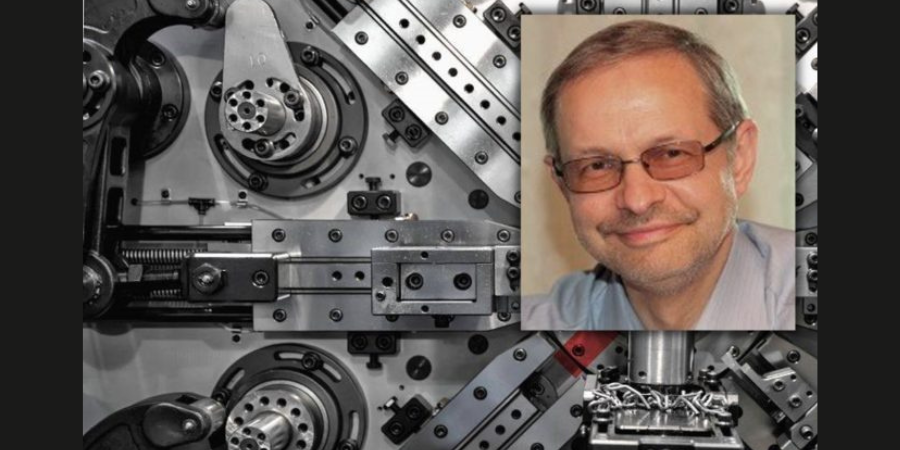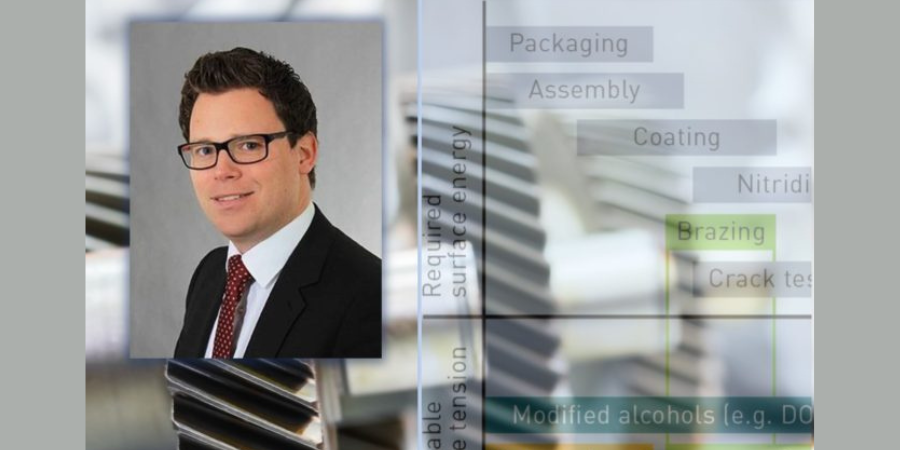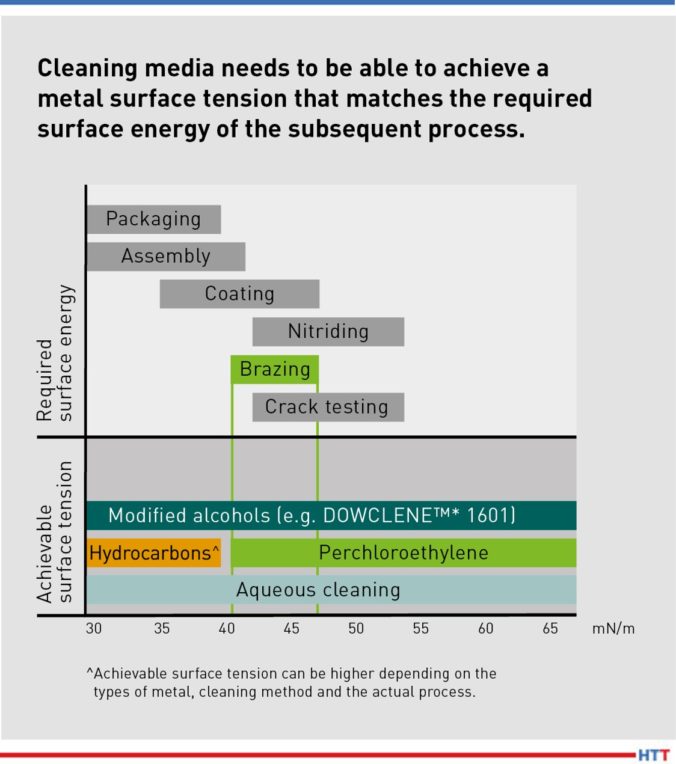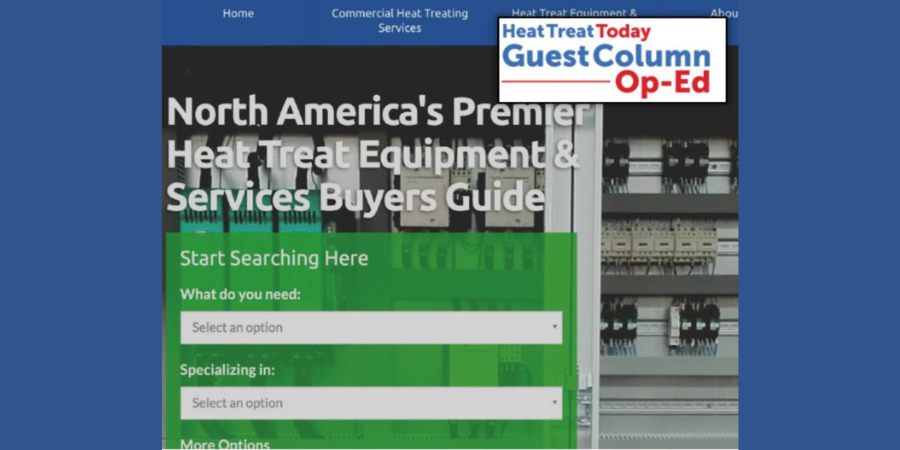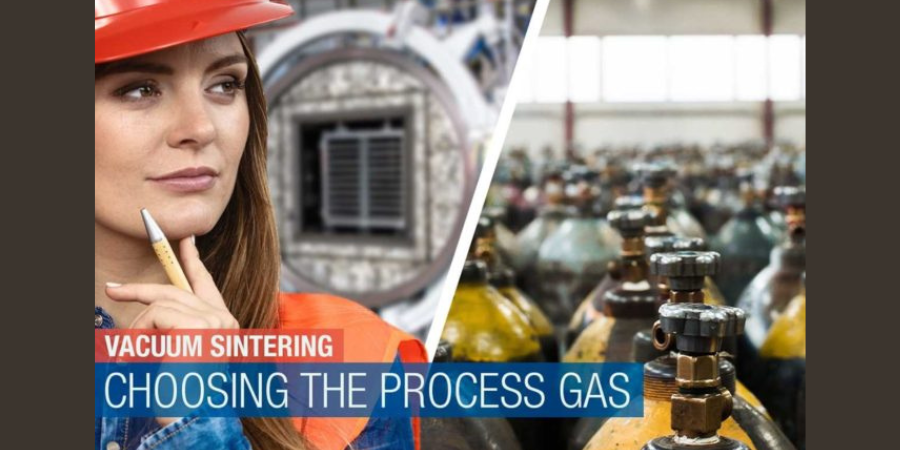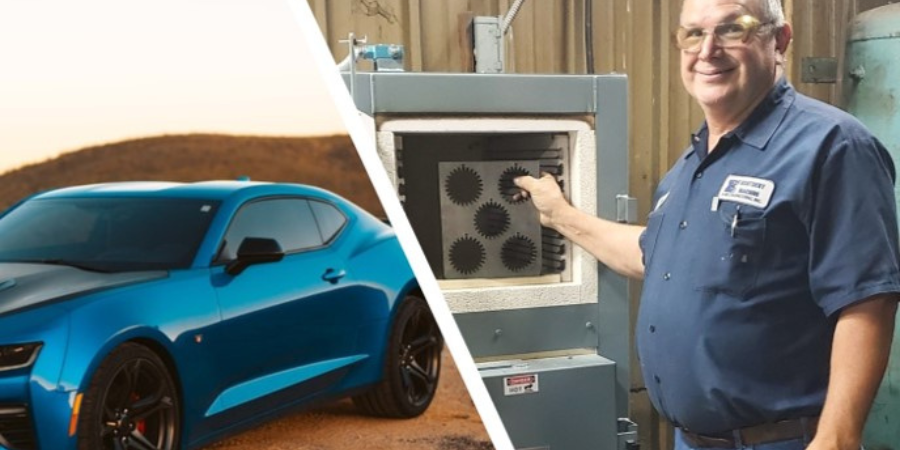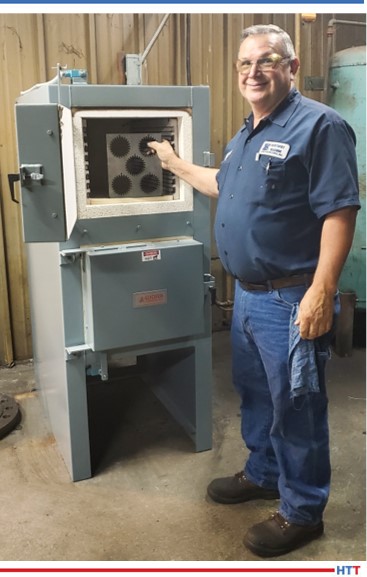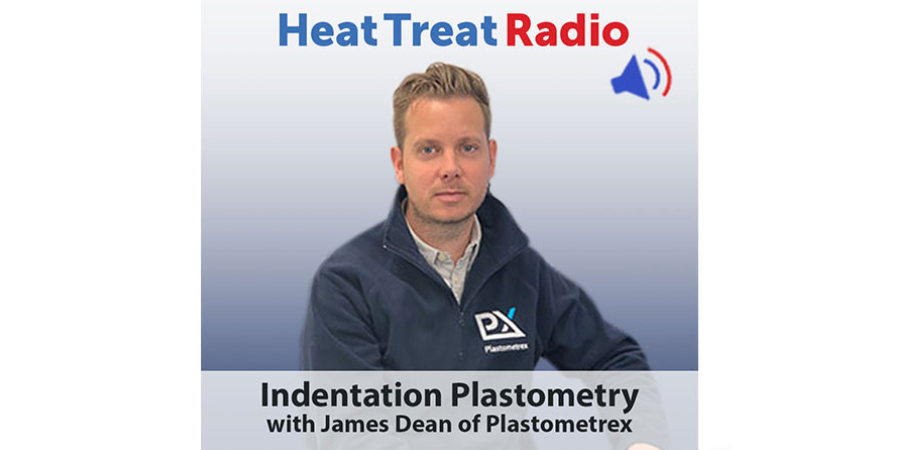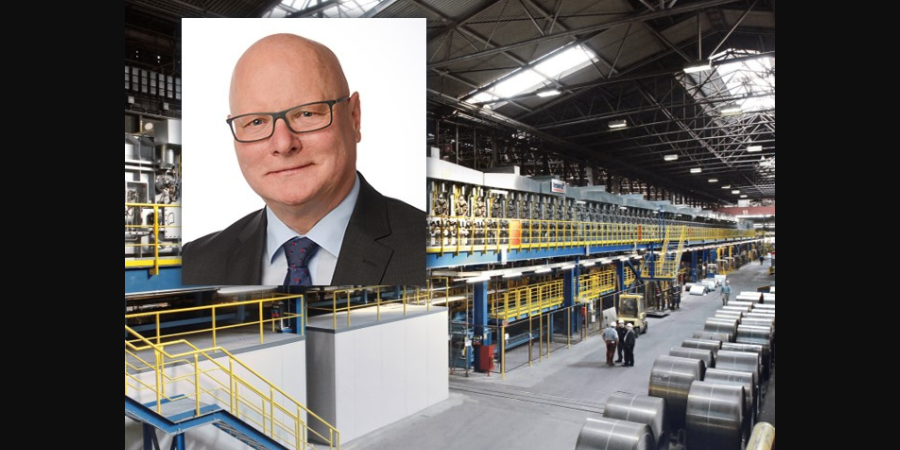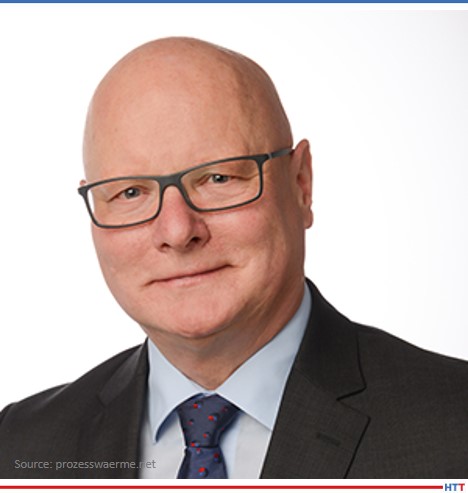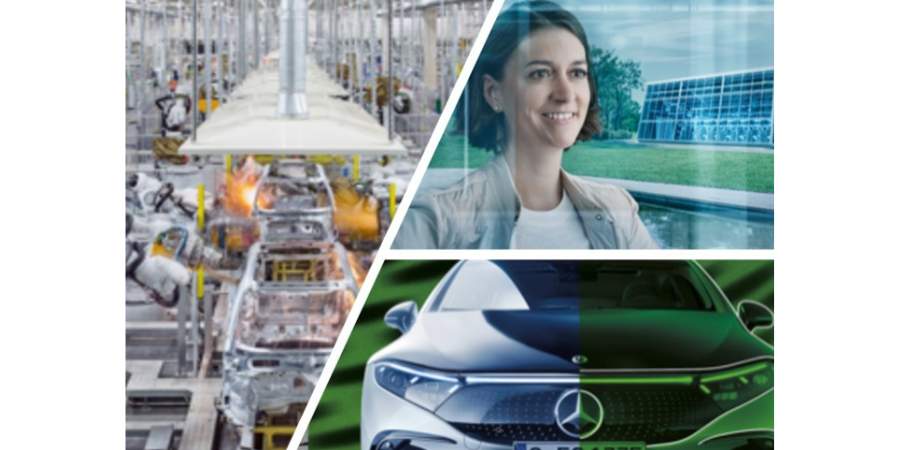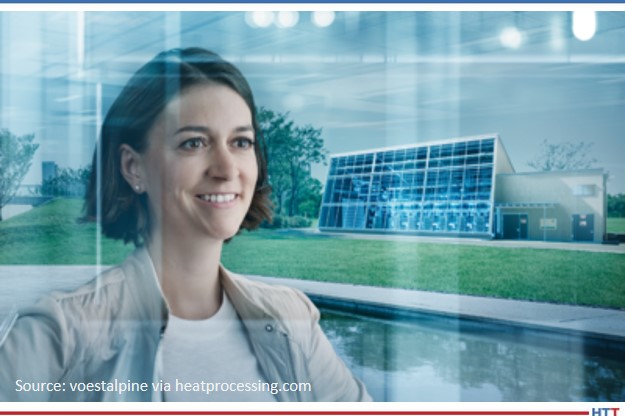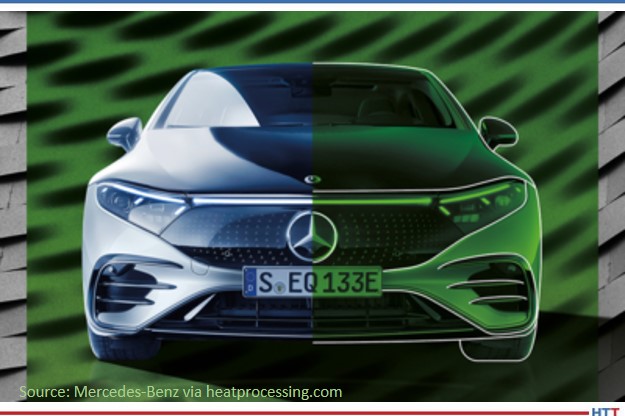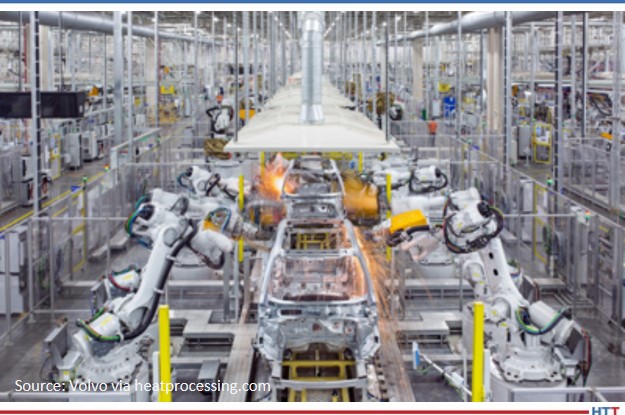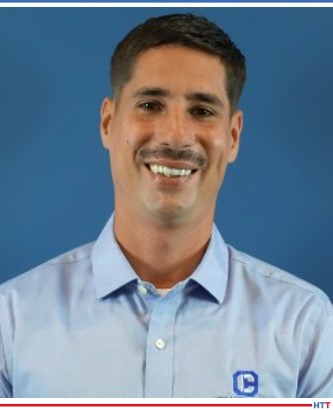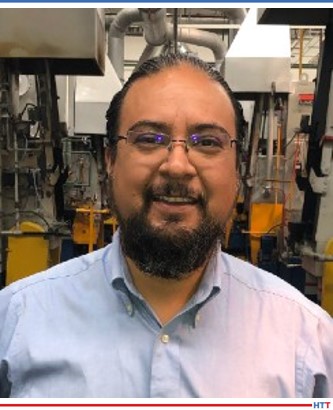The following transcript has been edited for your reading enjoyment.
DG: Today, we're going a bit international. We're going to have a conversation with Mr. James Dean from Plastometrex in the UK, which is obviously a far spell from Pittsburgh, where I'm located. James, welcome to Heat Treat Radio. We're looking forward to talking with you.
JD: Thanks, Doug, it's nice to be here.
DG: We want to talk about materials characterization, testing and things of that sort. We'll get into, specifically, what part of that in just a bit. But first, James, if you don't mind, briefly, let people know who you are, the qualifications you have to be talking about the topic that we will be hitting on, and about your history in the heat treat industry or in the materials characterization industry.
JD: Quick background: I'm a materials scientist from the UK. I first studied materials as a young undergraduate at Imperial College in London. That was way back in the year 2000. I subsequently went on to do a PhD in Cambridge, also in materials science. It was during that period when I really first became interested in the mechanical behavior of materials, particularly strength characteristics and the relationship between those strength characteristics and underlying microstructural features. In fact, one vivid memory that I have from an undergraduate laboratory class was measuring Vickers hardness numbers on age hardening aluminum copper alloys and monitoring the changes that occurred with different heat treatment times. That all struck me as being quite powerful because it meant that we could tune mechanical properties. Up until that point, I hadn't fully appreciated that that was possible.
What's a little more unfortunate is that I've also since learned that if we want to achieve a particular characteristic, high strength for example, we often have to do so at the expense of another, usually the ductility. I guess that's why material scientists all over the world continue to look for new compositions, new alloy systems, even novel heat treatments that offer mechanical performance improvements that, perhaps, haven't yet been realized. My involvement in this industry is driven simply by my interest in these things, which is why I feel extremely lucky to be leading a company like Plastometrex.
DG: Tell us a bit about the company. You're the CEO there. As I mentioned earlier, you're located in Cambridge, UK. Tell us about the company, its history and about the products and things of that sort.
JD: Plastometrex is a company that develops novel mechanical testing systems that are powered by advanced software tools. By advanced, what I really mean is state of the art modeling methods, things like finite-element analysis, optimization algorithms and also, forgive the buzz words but, machine learning tools, as well. These are needed because our machines measure stress strain curves and metal strength parameters from quick and simple indentation tests.
There is some justification to say that people have been indenting materials for centuries and, of course, that is true. But people have been doing this simply to measure hardness numbers, predominantly, at least. We might argue that anybody that understands a little bit about hardness testing probably also understands that hardness numbers are not fundamental material properties. They would understand that a material's hardness number actually changes if you change the shape of the indenter that you use or if you change the load that you apply.
Hardness numbers can only really be used in a semiquantitative way to rank materials. They can't be used in a design calculation or in a finite-element analysis. So, to use them as proxies for strength, which is often done, can, in fact, be potentially dangerous. I would go on to say that, unfortunately, hardness numbers are often accorded a much higher significance than they really deserve. My own view is that it is much better to have access to fundamental strength characteristics which is why we've been spending our time developing these new machines and their associated software packages.
So, to wrap up the question, the technique is called indentation plastometry and it was developed over a 10 – 12 year period of research, led mostly by Professor Bill Clyne and his research group in Cambridge. On the back of that, we established Plastometrex in late 2018 to commercialize the technology.
DG: You're saying the company, Plastometrex, was established in 2018. So, you're about 3 years into this. Are you fairly successful so far? I mean, are you happy with the progress?
JD: I would say that we're reasonably happy with our progress so far. Of course, like a lot of companies, we're just coming out of this rather difficult period because of Covid. What that means, for a company like ours, which I guess you could still class as a start-up, is that it's just much harder to sell equipment.
What we're finding right now is that lots of companies rationalized their organizations in various different ways. One of the first things that companies seem to have done, which is quite understandable, is put restrictions on their CapEx spending. That's something that we, like most companies, have to deal with at the moment.
But, notwithstanding that, I would say we still make good progress with monies to secure quite substantial amounts of investment. One of our leading investors is Element Materials Technology. They're one of the world's leading providers of testing inspection certification services. We're still employing more people. At this stage, we're launching new initiatives and we are selling machines, despite the current climate. Our trajectory looks quite good right now.
DG: Where are you selling, primarily? Is it mostly Europe?
JD: It's mostly Europe, at the moment. We have sold one of our machines, actually, to Worcester Polytechnique Institute in North America. We're actually having conversations right now, I won't disclose them, with other North American universities who have expressed an interest in technologies like ours.
DG: Good. It's good to see a young company doing well even in the midst of Covid, so congratulations on that.
Broadly speaking, your company is dealing with materials characterization testing. The equipment you produce: what properties is it, in fact, intended to characterize? You've already hit on this a little bit- stress, strain, etc. Maybe briefly explain each of those properties for those who might not know what the difference of those things are. A quick “materials 101.”
JD: The very quick answer to your question, Doug, is that we are measuring plasticity characteristics or strength characteristics. They're often best captured, or best represented, in the form of the stress strain curve.
Now, stress strain curve of material is really quite important since from it you can deduce important features like the stiffness of a material. But then there are other features, such as those I've described that relate to the plasticity characteristics. These are things, like the yield stress of the material, which is the stress at which the material starts to plastically deform or, i.e., permanently change its shape.
You can also view the hardening behavior as the material continues to strain, which is often quite important. And, you can also extract from the stress strain curves things, like an ultimate tensile strength or a fracture strength, and these things can be used in things like design calculations.
From the stress strain curve you can also extract a ductility value, which is a nominal strength fracture for those people in the know. But, as with hardness numbers, the ductility value is also not a fundamental material property and this is often not understood. The ductility value actually changes depending on the test geometry that you use. That's an important thing to understand because people often use the ductility in things like engineering critical assessments not fully understanding that that value can be different depending on the test that you did.
I think the important message here is indentation plastometry can be used to measure things like the yield stress, to measure the uniform elongation strength, to measure the ultimate tensile strength of the material. But, our technique can also be used, if you want to, to calculate things like the Vickers and the Brinell hardness numbers, as well. But, the limitations around hardness numbers that I've already outlined still apply.
DG: Your product is basically offering a new way of doing some of these tests. Basically, it almost looks like just a hardness test because you're doing the indentation, but you're getting a heck of a lot more out of it. Maybe, again, just 101, how have these tests been done in the past and what is the method that you've been developing over the past 3 years? How does that differ and what is the benefit?
JD: The current gold standard for mechanical testing is the uniaxial tensile test. To us, at least, that is another mechanical test that hasn't fundamentally changed for almost a century, actually. In principal, it is a rather simple test where you take a test specimen in the form of a testing coupon and you stretch it (or strain it, to use the proper term), and you do that until it breaks. If you monitor the forces in the displacements during the test, it's very easy to calculate the stresses and strains within the sample. But, there are a number of problems with this type of testing machine.
The first is that you need to have access to quite a lot of the material that you want to test because the test specimens are usually quite large, often in the centimeter dimension range. That also means that the material that you want to test needs to be machinable, and not all materials are; I'm referring mostly to metals here. In fact, some are actually quite difficult to machine so that this process of machining test coupons can be quite a cumbersome one. Often quite time consuming, too, especially if you need to outsource these procedures.
The test itself also requires access to a large, often very expensive, universal test machine, and, in addition, a suitably trained technician, as well. There can be further problems with things like specimen gripping, alignment of the specimen, machine compliance, and other things like that.
Whereas, and of course I'm biased, a machine like the indentation plastometer, really combines the very best attributes of hardness testing, which is speed, ease and simplicity of testing, with the very best attributes of tensile testing, which is acquisition and access to forced stress strain curves.
I would add to that, as well, that with a machine like ours, you can test real components and you can map spacial variations in properties across surfaces, such as those, for example, that might exist across a weld. Again, in summary, we think you get the best of both worlds with our machine and, in some cases, even things that are better than other machines.
DG: You may have already stated this a little bit, but briefly: indentation plastometry is basically taking an indentation to be able to test, not just hardness or not even necessarily hardness, but the deformation or the strain of material. Do you have to know the microstructure of the material when you're doing these tests?
JD: That's a good question. In principle, no. If we were to dig deep into the mechanics of what's going on within our system and our software package, you'd come to recognize that it's, from a mathematical point of view at least, insensitive to microsctructural features. There is a numerical method underlying this – a finite-element analysis – therefore, treating this as a continuum system doesn't take account explicitly of the microstructure.
When you're doing the test, it's actually helpful to know something about the microstructure simply because our technology is all about extracting bulk mechanical behavior engineering properties. Therefore, when we do our indentation test, it is important that we are indenting a representative volume of the material.
It is important that we are capturing all of the microstructural features that give rise to the behavior you would measure in a microscopic stress strain test. Otherwise, you can't pull out those bulk, core engineering properties, and therefore, the scale on which you do the indent is important. Your indenter has to be large relative to the scale of the microstructure. So, it's only at that level that you need to understand or know anything about the microstructure.
DG: This test is a nondestructive test, right? You said you can actually test live materials, correct?
JD: Yes.
DG: You don't have to destroy them, you don't have to machine them, you don't have to make them into something you can rip apart, right?
JD: Right.
DG: Is there a limitation on the size of the product that you can test? Do you have to put this thing into a machine to clamp it down to do the indentation?
JD: Yes. There are some limitations. I'll come back to those in a second. I just want to address the first point. It wasn't a question, but you actually referenced it, so I'm going to pick up on it, and it's about whether this test is nondestructive or not.
It's an interesting question. I think, really, it's a matter of perspective, or sometimes, a matter of even industry. We don't destroy test samples in the same way you do during a normal tensile test. But, we do create small indents in the surface of the specimen. Whether that can be regarded as destructive is really open to interpretation. Our colleagues in the aerospace industry probably would be comfortable testing a turbine blade and then putting it back into service even if the indent is relatively small. So, on that basis, they might consider the test to be a destructive one. But, for many other applications, we, and others actually, would regard our test as a nondestructive one and, indeed, that is often how we pitch it.
Then, to the second question which is about limitations on size. . .
DG: Yes, size, geometry, shape, or anything of that sort.
JD: There are no restrictions on shape, per se. It's important that the specimen has two parallel sides. When you put in on the plinth, under which when you do the testing, when you come down normal to that surface with the indenter, you want them to be as flat as possible. You can accommodate small inclines up to 2-3 degrees, but ideally they would be parallel. So, that's one constraint.
In terms of total size, if you look at a bench top machine, (and anybody visiting our website would be able to see it), it's got sort of like a window, a cavity, where you can put your specimens into which has got a width of about 20 cm, height of about 7 cm and a depth which is also probably about 20 cm, as well. That is what is governing/dictating the maximum size of sample you can put in there, at the moment.
In terms of the other direction, how small can you go, we advised people not to indent anything that has lateral dimensions less than about 5 x 5 mm and that is because if you start to indent close to edges, you can get edge effects and therefore in our software package, behind the scenes, the modeling assumptions that we impose start to break down.
In addition to that, in terms of the sample thickness, we typically impose a minimum height of about 2 mm. Then again, that is because, in our underlying software package, the modeling assumptions assume that what you're indenting is essentially semi infinite in size and if you indent thin samples, that assumption breaks down too. That's what is driving those constraints on sample size.
DG: And, being able to run a test on a spherical object is not a problem as long as you can get it flat, I mean, like pipe tube and that type of stuff?
JD: Pipes are interesting, actually. One of the things we're working on right now as a company is an in-field testing kit, or portable detection plastometer. Our immediate focus is on the pipeline materials. In fact, you might know this, there is some new legislation in North America called the Gas Mega Rule which is now mandating that pipeline operators inspect their pipes, I think it's probably every one mile into this. One of the tests that they need to do is a strength test.
There's a big opportunity out there, potentially, for the testing of pipe materials. A technology like ours is something that could support and enable that. But then, coming back to your question about indenting a surface that is curved, which is what this really relates to. And that is simply, again, a matter of scale. If it's got extremely high curvature and you come down with an indenter such that the curvature is large with respect to indenter size, then you can now have problems. If the curvature is small relative to the scale of the indent, then it's okay; i.e., if you come down and it still looks like a flat surface, it's the indenter because of the differences in scale, then you're okay.
DG: And, I think you said the 2-3 degree the tolerance which would come into play there.
JD: Indeed.
DG: Most anybody that's going to buy this equipment is going to say, “OK, what's in it for me? Why should I buy this thing as opposed to going the normal route, or things of that sort?” Talk to us a little bit about the overall expense, overall experience with your equipment. Why would it be something that people would pick up?
JD: From an experience point of view, I think one of our key objectives while developing the technology and, indeed, the supporting software, has been to ensure that the experience of using the system is a smooth one. We've attempted to minimize the level of interaction to these it needs to have with the machine and the software and also to try to maximize the degree of automation. I think that we've been able to strike the right balance. I think the workflow is simple and intuitive. And, importantly, we present the results in a format that the users would recognize if they've previously done conventional mechanical testing.
I think one of the key attributes, if you like, one of the key salable attributes of our system, is that you can measure full stress strength strain curves in just a few minutes, 2 – 3 minutes, so almost in real time. When you're doing this thing in real time, it's potentially transformative for lots of businesses in lots of different ways because it unlocks that materials testing bottleneck that lots of companies are already familiar with. I don't like the term, but the value proposition, if you like, is speed of testing, ease of testing and simplicity of testing. That's where you're going to derive the most value from a machine like ours.
DG: Do you have any examples of where somebody has used this? You don't need to mention names, of course, I'm not asking for company names, but maybe an industry where somebody's been able to kind of move their testing into real time testing? And if you don't, that's also okay.
JD: I can give you a couple of examples which we can disclose. We've got some people using our machine for high thru port testing and combinatorial analysis with things like additively manufactured metals. That is basically where companies that are using additively manufactured systems are very keen to understand how changes in process parameters and changes in alloy composition and changes in powder type and powder size distribution, what effect that has on the mechanical properties.
If you want to do this using conventional systems, you've got to print tensile specimens or other types of bonds, and they you've got to print them and test them. This is quite cumbersome. Whereas, with our machine, you can just print a small cube or small disc or something like that, and then you can immediately indent it and get stress strength curves. You can do, essentially, rapid design exploration and rapid process optimization.
This is not just specific to end processes. Wherever you've got all the types of thermomechanical processes taking place to develop or design the metals and you need to characterize the corresponding strength characteristics and you want to do it quickly, then you need a machine like ours.
DG: They wouldn't even need to print the actual part; they'd print a suitably large enough cube, test it, and then you'll know.
JD: Absolutely. And that cube, as I've described, could be quite small, it might just be 1 cm cubed in volume and that would be sufficient. So, actually, the cost of doing this test comes down, as well, because you're not printing lots of material.
We're working with additive manufactured companies right now that are validating the technology. We're having some of these companies print material for us and it's extremely expensive unfortunately and it's just a process that we have to go through at the moment to prove out the technology. They can see the benefit themselves of being able to rapidly characterize the strength of their materials.
DG: Do you want to address, at all, as far as overall lifetime expense investment in a product like yours as opposed to other testing methods? We talked about workflow, ease of use, ease of reporting and things of that sort. Any comments on lifetime costs of use?
JD: Yes, I can say a few things. First off, our machines typically retail at prices which are comparable to a low end universal mechanical test machine, mid-range for hardness test machines, so sort of right in the middle there. Although, as I've said before, I think our machine benefits from having the best attributes involved. It is a robust machine, it's just doing indentation tests, so the longevity and the robustness is good and strong.
There are very few aftermarket parts that you might, conceivably, want to buy to bolt on. You don't need suitably trained technicians either with backgrounds in mechanical testing or material science; you can press the button and run it. The lifetime costs, we think, are substantially better than a conventional tensile test machine. If people want to talk a bit more about the commercial aspect of these machines, they, by all means, can get in touch.
It might be worth mentioning, it's not necessary to buy our machines. We do have leasing agreements specifically because of these CapEx restrictions that we're seeing out there in market right now, but also because of a certainty you can anyway. If these go on to operational expenses, then there are certain tax advantages, as well, to doing that.
DG: Types of companies that would find this to be really helpful. In other words, are you seeing that a certain industry or a certain type of company are interested in your product, or an industry that should be that is not yet?
JD: A good question. We've been extremely surprised, actually, at the level of traction we've been able to generate so far. We officially launched our machine in November of last year, so we're only 4 or 5 months since the launch. We're already talking to probably 50 or 60 companies right now, including some major, major tier 1 companies across the world.
I think one of the great things about materials testing is that it is not set or industry specific. Almost all industries need access to the strength of their materials in order to design new products, for example, or to ensure that the materials or products that they produce are safe to operate and fit for purpose. At the moment, we're getting a lot of interest from metal producing companies, processing companies from the additive manufacturing community which, traditionally, have been quite difficult to measure the strength of their materials, from aerospace companies to automotive companies to companies engaged in things like failure analysis and also from universities and research institutes, too.
We're really seeing an interest from a very broad range of organizations and I think that is reflective of what I said in the beginning of this question which is that materials testing is not sector or industry specific, it's kind of ubiquitous of all those industries.
DG: What are you most excited about with this company? You're, what, 6 months into it maybe as far as actual product out there? What puts a smile on your face?
JD: That's a good question. There are a couple of things that put a smile on my face. One, I really enjoy working with the people that I've got on my team, who are as enthusiastic and as motivated as me to see this company do well. And, I also really enjoy talking to the wide range of customers, because what I see when we talk, is them saying, “Gosh, if we would have known about this 5 years ago, we'd be already using it.” or they say, “This is fantastic. This is exactly what we've been looking for and it can solve this problem and that problem.” Then, they start coming to me and saying, “Can you also change something up so that we can do this or we can do that?”
So, there's always new potential opportunities arising because of it. That really excites me, because what it points to is additional opportunities for plastometry.
DG: What do you worry about? What keeps you up at night?
JD: I guess, the immediate concern right now is what the recovery post Covid looks like, especially in certain industries like aerospace which, in ordinary times, would have been an ideal market for a technology like ours. That's the type of thing that makes me worry. So, we're keeping a very close eye on what the recovery looks like, not just here in the UK, but also abroad.
The other thing that, I wouldn't so much say worries me, but it is something that we're thinking very hard about, is the standardization methodology, as well. If you want to get a technology like ours used broadly across all industries, then one thing that crops up a lot is, Is it certified? Is there a testing standard? At the moment, there isn't.
We are compliant with a couple of testing standards around instrumented indentation testing. We're also working, right now, with the National Physical Laboratory in the UK, which is, I guess, our equivalent of your NIST (National Institute of Standards and Technology). They are working with us, right now, as a precursor to supporting our efforts towards standardizing our test technology. It's a 3 – 5 year program, but I think if we can tread that long path properly and get the test methodology certified, then, again, additional opportunities will open to us in those more conservative industries.
DG: Do you have a presence in North America, or do you have a way of dealing with customers in North America?
JD: We have no formal way of doing this, and at the moment, it's manageable because we're not getting hundreds of requests every day. We are shipping machines to North America. We are managing it internally by ourselves, at the moment. One of the things that we do have in our back pocket, so to speak, is our relationship with Element, one of our leading investors. We have a huge North American presence and they can certainly support us where needed, if, for example, we need to set up a base in North America or engage with distributors in North America or something like that.
DG: We talked before we turned the recording button on about how to properly pronounce your company; it's not plastometrics, it's Plastometrex. Where would people go if they want to find out more? If you're comfortable, James, you can give out whatever personal type of information, if you want your cellphone out there or email or whatever, feel free to do that, as well as your website.
JD: The first place we encourage people to visit is our website, and that is www.plastometrex.com and there is information there about our machine, about its capabilities, there are some FAQs, there are lots of technical articles sort of describing the underlying science, and there are research publications. It's a really good source of information for people.
One of the other places I point people to is our LinkedIn channel. We have a very active presence on LinkedIn where we're constantly pushing our material- some technical, some promotional, some lighthearted, some serious. It's a really good place to engage with us. We've got lots of educational content going out, as well. And, of course, people can reach out to me directly at my LinkedIn by searching for James Dean Plastometrex. They are the three best ways, I would say.
 A leader in the “Tool & Dies” sector — voestalpine High Performance Metals Polska -- placed an order for a retort tempering furnace with vacuum purging. The furnace will be used for tempering tool steel after the gas quenching process.
A leader in the “Tool & Dies” sector — voestalpine High Performance Metals Polska -- placed an order for a retort tempering furnace with vacuum purging. The furnace will be used for tempering tool steel after the gas quenching process.




